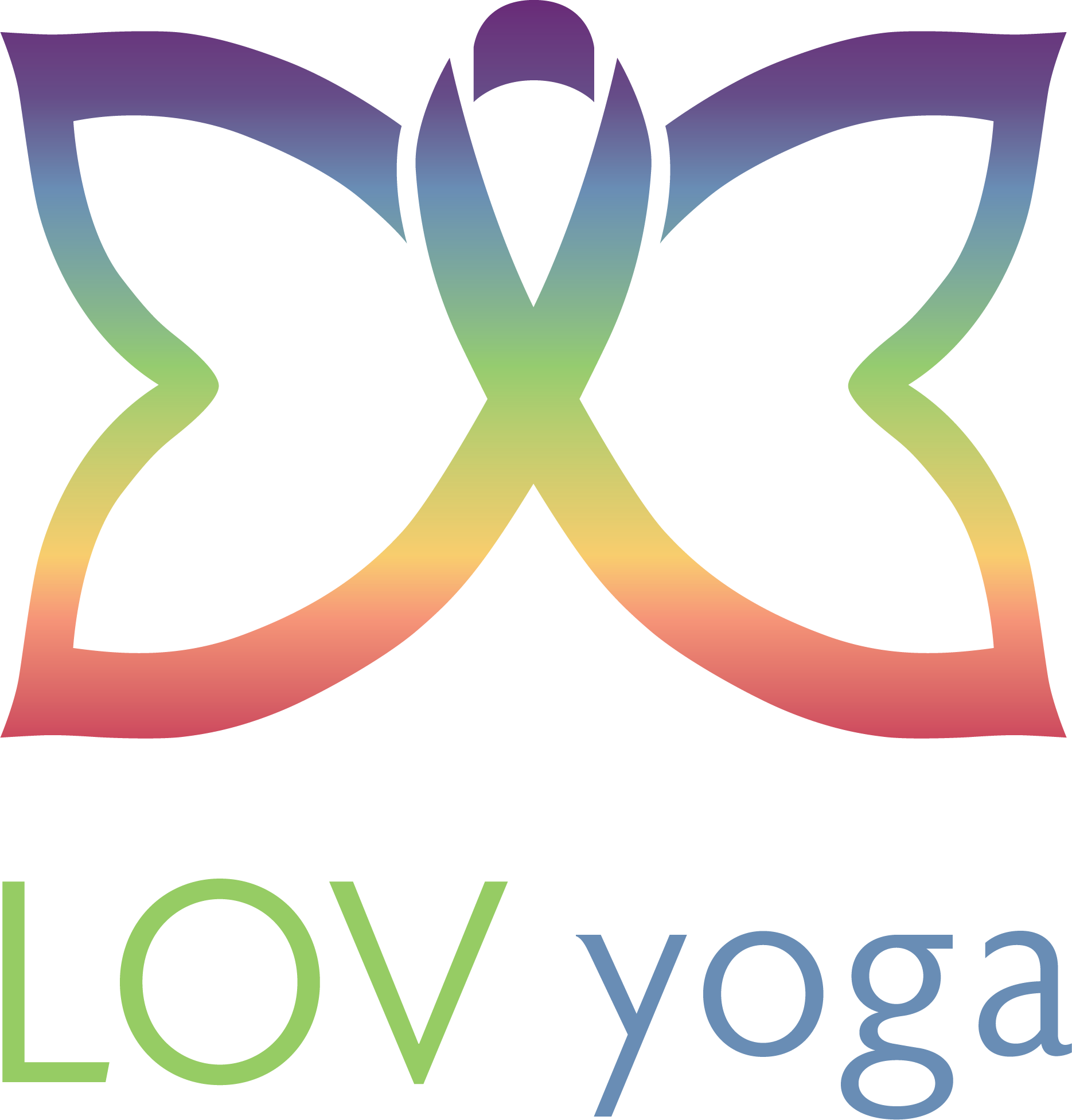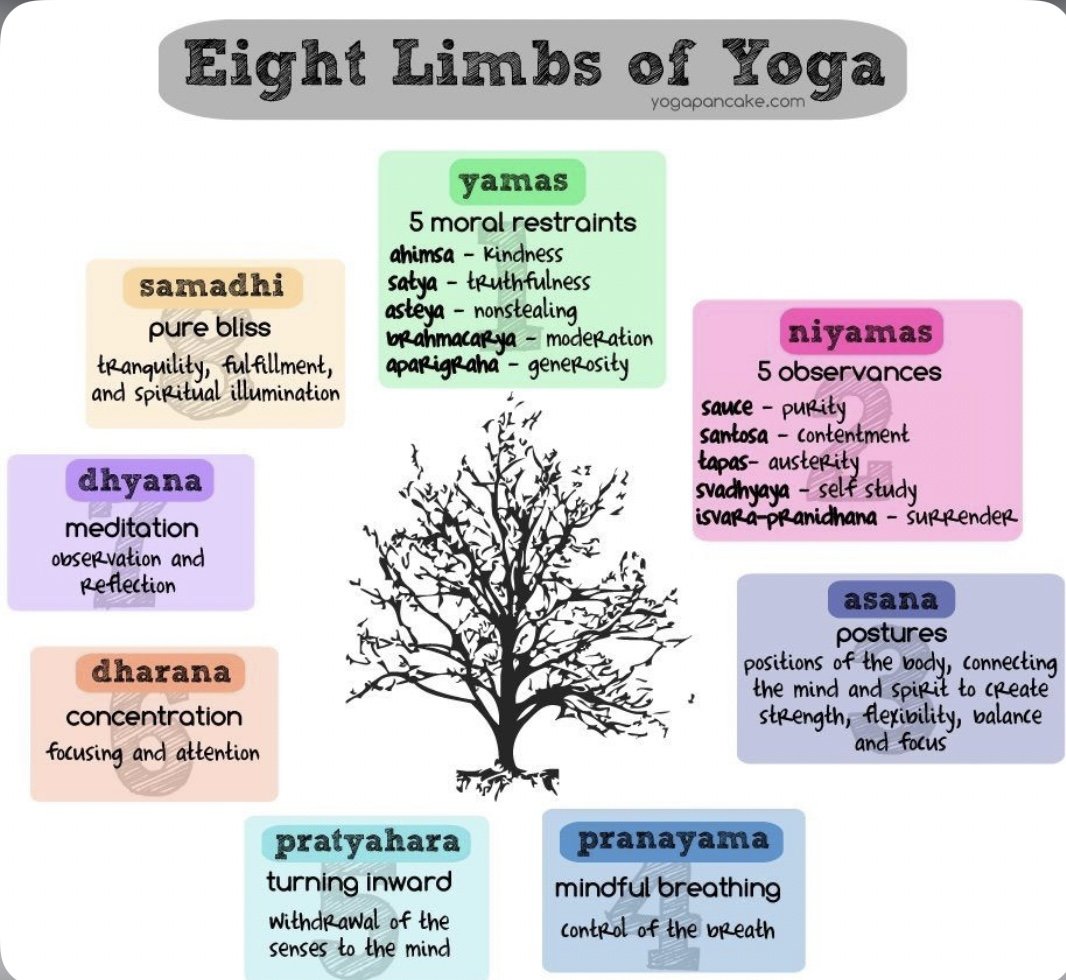FAQ's about Yoga and Yoga Therapy
What is Yoga Therapy?
Yoga therapy is a customizable process of exploration that leads to realization. It is yoga from the inside out that brings balance and overall wellness to the body, mind and soul. Through goal setting, intake and assessment, a specific plan is custom tailored to addresses physical, mental and emotional needs of each individual or group. The use of yogic tools and principles such as mindful movement, asana (postures & stretches), breath-work, meditation and self reflection, are applied to create consistent routines and a hOMe practice.
How Can Yoga Therapy Help Me?
Set and Reach Personal Foals
Self Reflection leads to Realization
Facilitates Relaxation
Nervous System Balance
Grief & Trauma Processing
Stress Management
Chronic Pain Management
Increase Range of Motion & Flexibility
Increase Balance Physically and Emotionally
Increase Strength
Encourages Consistent Routines, Practices & Positive Habits
Increase Self Compassion, Self Love & Self Care
Encourages Mindfulness
Community & Connection
Experiencing Joy & Bliss
Establishes a Sense of Presence & Grounding
Find your Empowerment
How is yoga therapy different than a yoga class?
A public yoga class can help relieve tension and stress, boost your mood and enable you to connect to yourself and others. This is great as part of your overall wellness practice. It’s becomes common for yogis to feel like they must go to a yoga class in order to practice yoga because they need someone to lead them through it.
Yoga Therapy can only be taught by a licensed Yoga Therapist. It is a process that takes yogic principles and practices a step further. Individual custom tailored sessions involve breathing, mindfulness practices and specific postures that work for your body and help YOU reach personal goals. Yoga therapy is a custom process that teaches how to apply yogic tools, integrate new routines, create overall wellness and a personal hOMe practice. You can still practice yoga therapy when going to yoga classes because you can take the knowledge with you and use it to honor your body and move with confidence and inner wisdom.
For a decade I went to yoga classes regularly but didn’t know how to integrate yoga into my life on my own. I felt like I needed to go to a class in order to feel peace, presence, centered focus, sense of grounding. I also didn’t didn’t know how to “live my yoga” until I was trained through yoga therapy. Yoga is not what we do, it’s how we live and who we are. Yoga Therapy also enabled me to customize my yoga practice according to life changes: competitive athlete, business owner, grief, trauma, cancer caregiver, pregnancy etc.
Have you been contemplating integrating a yoga and/mindfulness routine into your life and haven’t known how to begin? Do you think you may want to try yoga and aren’t sure if it’s for you or that you’re not flexible? I assure you that everyone can do yoga and feel benefits too! Yoga will look different and will feel different for each individual and yoga therapy is a personalized approach that can help you learn what is right for your body. Yoga Therapy teaches you how to do yoga that is right for your body. It can help you feel calm in your body. We can’t intellectualize calm, we must internalize it.
Intake, Goals & Assessment + Plan & Practice = Yoga Therapy
How is yoga therapy different than talk therapy?
It is helpful to talk through problems and receive advice from well trained psychosocial providers. The mind space is tricky to navigate and talk therapy can help work through complexities of grief, trauma, anxiety and depression through telling one’s story and also retraining the mind.
Sometimes working with the mind can be enough but for me and many others, there comes a point when talking must turn to action in order to feel better. Talking plus moving through what we are thinking while cultivating a mind, body, soul connection is a powerful combination for lasting transformation.
Yoga therapy also teaches tools like mantra (repetition of words and phrases), meditation (practice of quieting the mind), mindfulness (awareness of thinking and actions) and breath-work (calm breath = calm mind)
I have spent many years of my life going through consistent talk therapy which was helpful for a variety of reasons. At the end of the day, my sadhana or yoga practice is what has healed my body from injury, stress and trauma as well as my heart from grief, anxiety and depression.
Your best version of yourself is within and is already there, it’s been there all along. You’ve probably seen glimpses of this self before but sometimes she gets overshadowed by the anxiety, depression, grief, trauma or fear. She is who wants to live for you 98% of the time. It can never be 100% because sometimes the darkness prevails so she can be reminded of the light. Yet she is seemingly illusive more than this, maybe living closer to 70% of the time. How can she live for you more? You just have to make her bigger each day by nourishing her, connecting with her so that she can grow bigger and stronger.
What else do I need to know about Yoga (plus common misconceptions):
Yoga is not a religion - it has Hindu roots (buddhism) however you can practice any religion and also practice yoga. The true nature of all of us is a spiritual center that can be cultivated through meditation, mindful movement, breath work and self reflection.
Yoga is not a workout - it can be, if you want; however there are 8 limbs of yoga and one of them is asana (postures). you can actually be doing yoga without moving at all. Sitting in meditation, practicing breath- work…
You don’t have to be flexible to do yoga :)
Yoga truly is for everybody (if taught in a safe, supportive, therapeutic way)
Yoga is less about what we do on the mat and more about how we live in the world.
There are 8 Limbs of Yoga so we can practice in many ways! Yoga is not just a physical practice of bending into pretzel like poses or stretching in such a strenuous way that makes you feel sore later.


